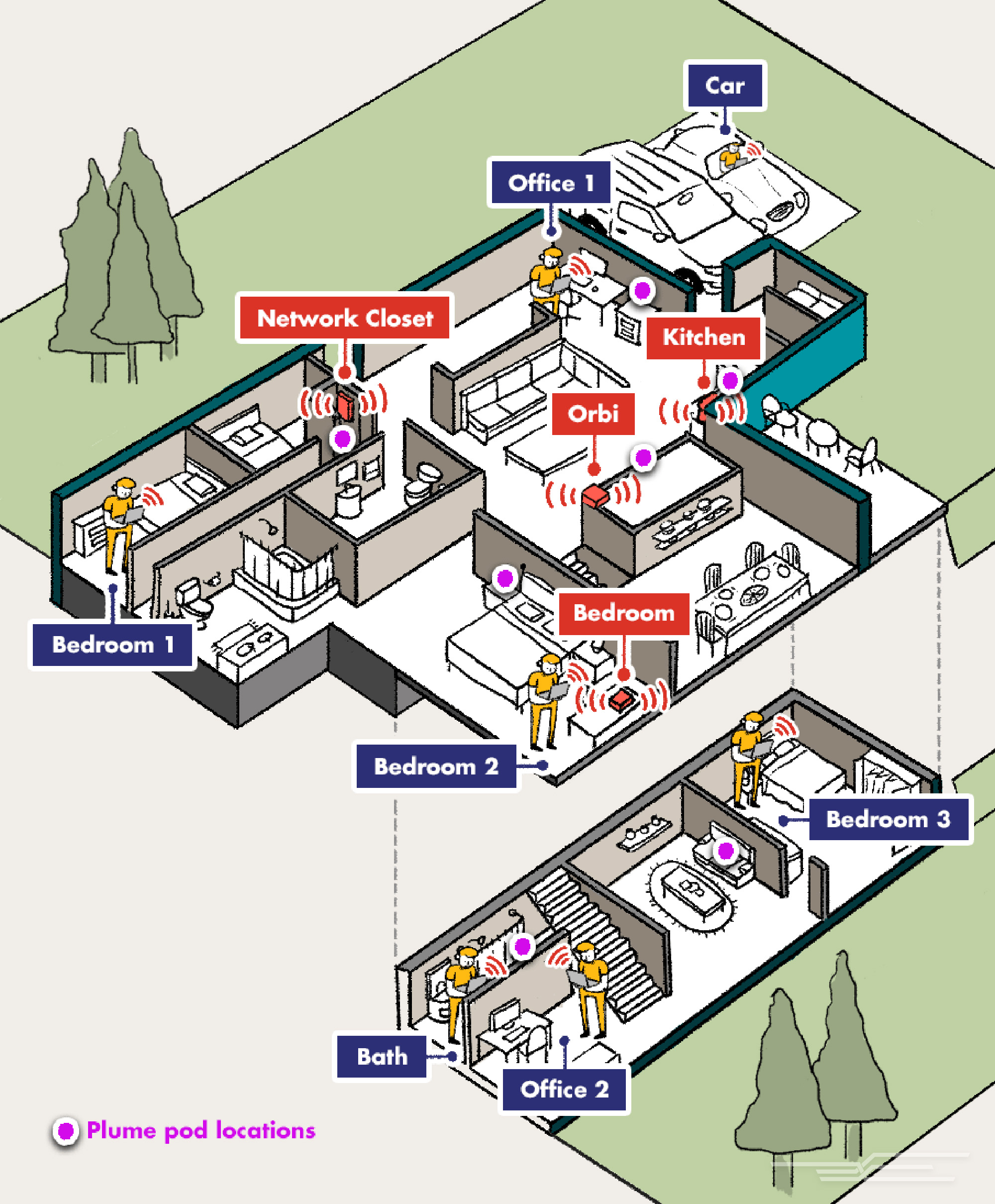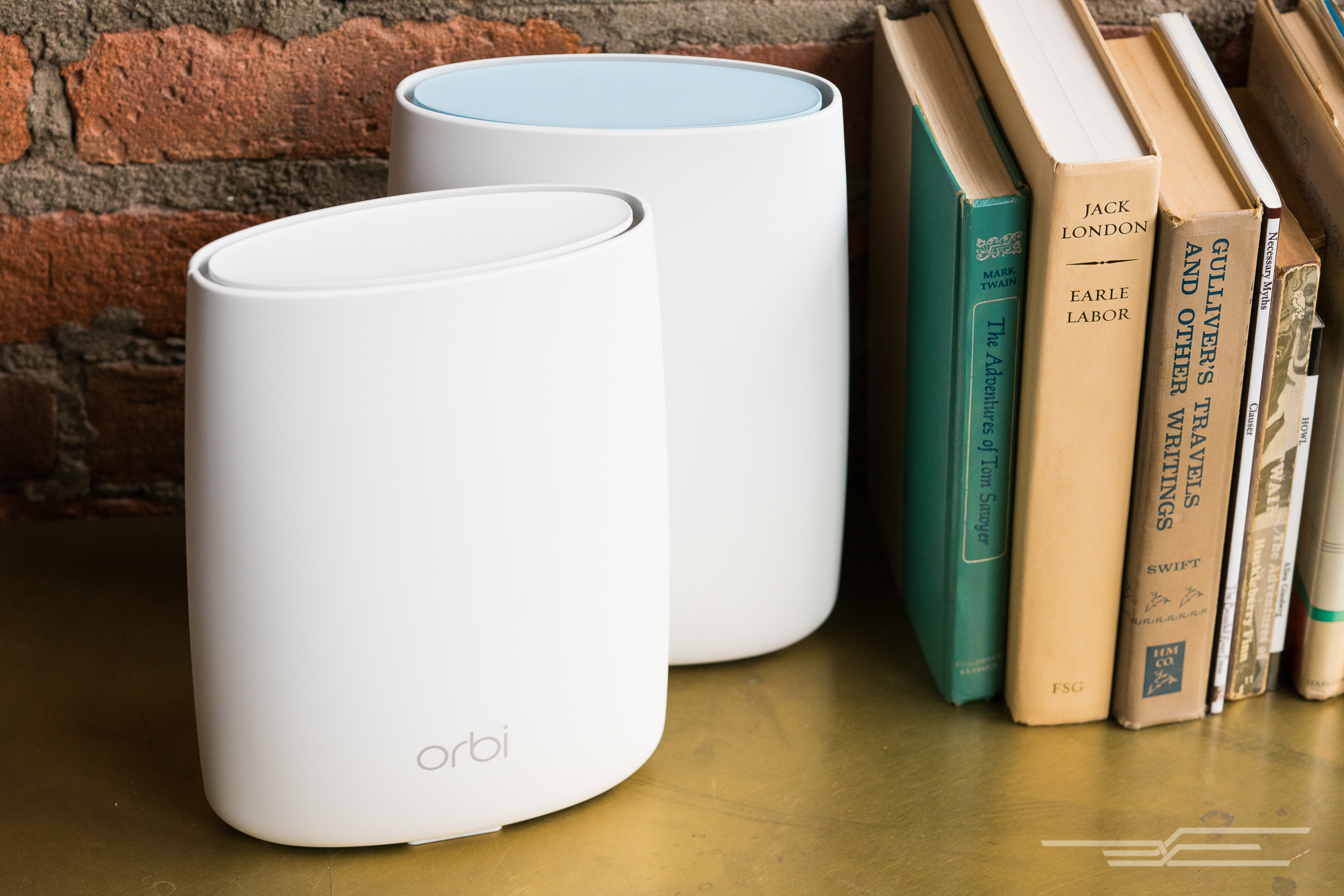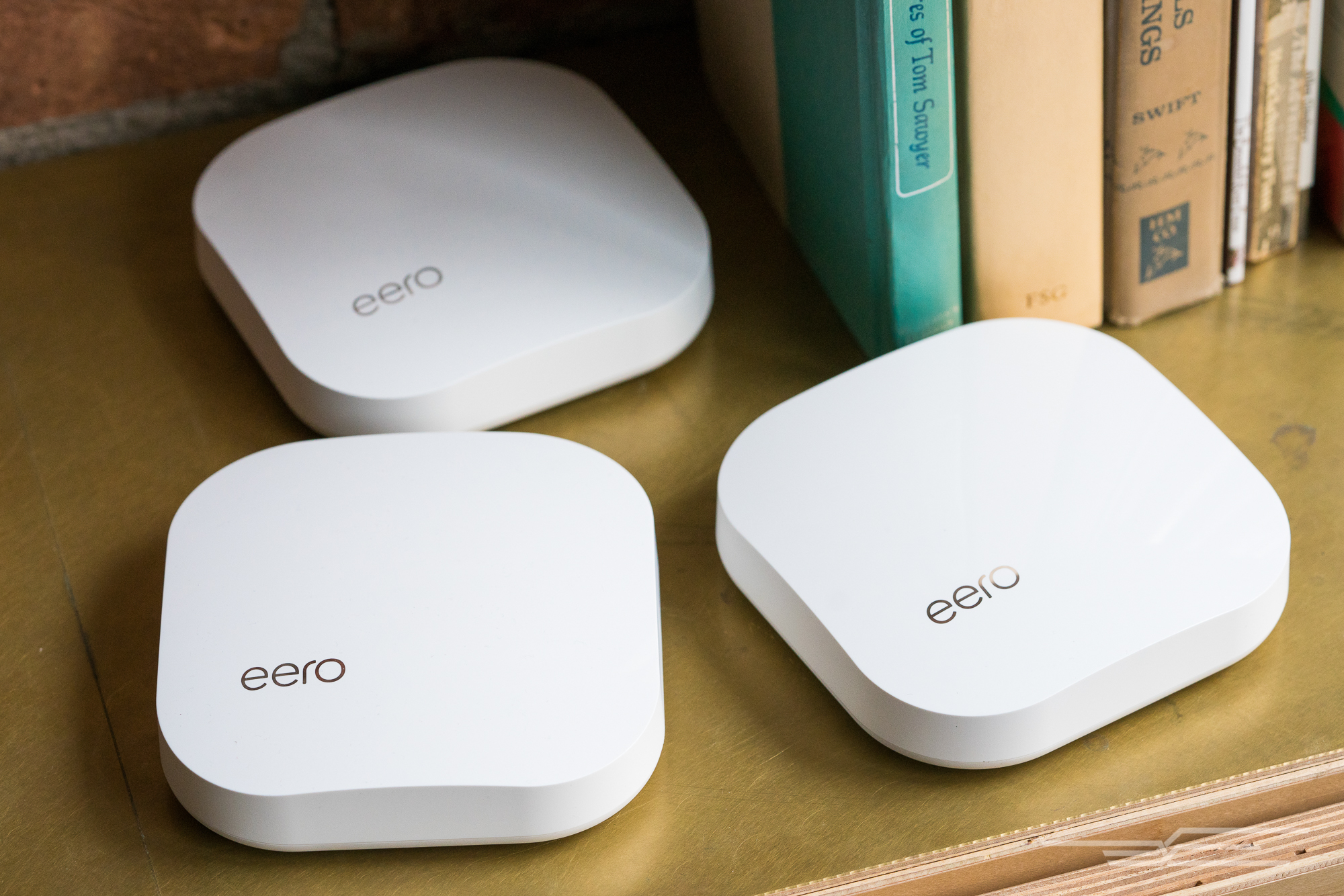Who this is for
You should consider a mesh-networking kit if you have a house that a single powerful router can’t cover, such as a large house (say, above 3,000 square feet), a small house with signal-killing interior walls (like lath-and-plaster, brick, or concrete blocks), or a house with a complicated layout. But before you toss out everything and get a mesh-networking kit, you should try moving your router to a central location, adding a wireless extender, or running Ethernet cable to inexpensive wireless access points. These approaches offer the benefits of the mesh-network kits, but at a much lower cost.
How we picked and tested

For our first two rounds, we tested every home mesh networking kit we could get (not just-announced, in crowdfunding, or in preproduction, but actually available when we started testing). Our first round of testing included the Eero, Luma, and Netgear Orbi kits, as well as both the HD and (now discontinued) standard versions of the AmpliFi kit. For our current round, we added the Linksys Velop, Google Wifi, Amped Ally, and Plume kits.
To test coverage and performance, we set up each kit’s units in a challenging home environment. The two-story, 3,500-square-foot house we used is built into a hillside, with a foundation slab underneath half of the top floor. The foundation slab effectively kills any direct Wi-Fi signal from the upstairs networking closet to the bottom floor. We tested latency and throughput for each mesh kit a minimum of three times in each of the four corners in both floors, as well as inside a parked car in the driveway. We also tested usability by browsing random selections from the front page of YouTube on a smartphone in each of the test locations for a few minutes.
Finally, we paid close attention to roaming. I wrote a script that made my test laptop “BING!” every time it roamed from one access point to another, or from one spectrum to another, and I gave the devices as much chance to network-roam on their own as possible. To learn about our testing procedure in detail, please see our full guide.
Our pick: Netgear Orbi

Netgear’s Orbi RBK50 is the best Wi-Fi mesh kit for most people, because it covers all the bases in the simplest way. It ranked at or near the top of the pack for throughput, it’s easy to set up and use, it’s packed with advanced features, it has four wired Gigabit Ethernet ports, and, unlike most mesh kits, it still works without an Internet connection. The Orbi is also one of the only kits we tested with a dedicated backhaul band for communication between the router and the satellite unit.
Ease of setup is a pretty big deal with Wi-Fi mesh, because the placement of the units can be as important as which kit you buy. The fact that the Orbi kit has just two units instead of three, with dead-simple instructions—put the base unit where your Internet connection is, and the satellite in the middle of your house—will ease the technical anxiety of people who simply want to plug it in and get on with their lives. The Orbi is also the only kit we tested that can be set up with a local Web interface, instead of a cloud service or smartphone app. It works just fine with any Internet connection or even none at all.
Orbi’s only real flaw is that it uses the same channels for all three radios on the router and satellite(s). This approach maximizes your chance of congestion and interference, indicating that Orbi might not be the best choice for people with a large number of devices.
Runner-up: Eero

Eero was the first, and is still the most famous, mesh-networking kit. The system is physically attractive, technologically flexible, and well-established. In our testing environment, Eero was reliable and easy to set up and use, and offers good throughput and range, along with serious expandability. You can also buy more Eero units and adopt them into your existing network, if your place is big enough and your pockets are deep enough to justify that. It’s a solid runner-up choice if Orbi is sold out or too expensive, or if you have a situation that needs multi-“hop” but you don’t want to try the relatively unknown Plume.
Eero’s intuitive app lets you enable an “Internet pause” feature that makes it very easy to shut off Internet access—instantly or on a schedule—to get the attention of unruly kids, spouses, or roommates. The Eero system is extremely well-documented, too, in a style that doesn’t scare off network novices yet still gives technically minded people all the details they want.
For aesthetes, homes with lots of devices, and next-gen fans: Plume

Plume takes a totally different approach to networking than Orbi does by prioritizing rock-solid, low-latency connections over high throughput. While every other mesh kit consists of two or three fairly high-power devices, a Plume network consists of a bunch of tiny, relatively inexpensive, low-powered pods that plug directly into wall outlets. Plume’s cloud optimizer software automatically organizes the pods into a complex topology, which should offer significant benefits for anybody with a large number of Wi-Fi devices or signal-blocking obstacles in their house.
Despite a given pod frequently needing two or even three more hops to communicate with the router than competing units, the Plume system had the lowest latency of any kit I tested. That’s seriously impressive, and it helps devices roam more easily and accurately than any other kit we tested.
Plume’s smartphone-controlled interface is simple, intuitive, and sufficient for the typical home, but—like all the smartphone-controlled mesh kits we tried, and unlike Orbi—it doesn’t go deep into the technical details. If you want to go nuts with advanced functions, you should plug the main Plume pod into your existing router and put the kit in bridge mode.
This guide may have been updated by The Wirecutter. To see the current recommendation, please go here.
Note from The Wirecutter: When readers choose to buy our independently chosen editorial picks, we may earn affiliate commissions that support our work.




